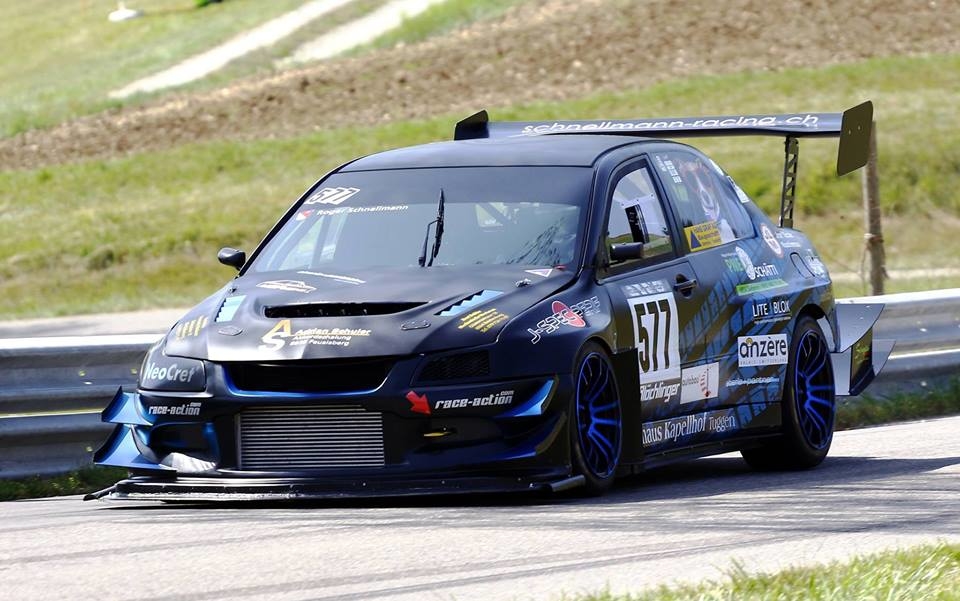Though the popping, banging, and turbocharger whistling might distract from the excellent driving on display, a closer look reveals how one talented racer gets the utmost from an unfriendly Lancer Evolution with a vicious power delivery. Roger Schnellman, an appropriately named Swiss hillclimber, uses tidy lines, restraint, and an appreciation of his car’s strong points to eke out an advantage over hillclimbing cars costing much more. In fact, Schnellman rose to near-dominance at the St. Ursanne-Les Rangiers Hillclimb last year; only finishing behind a Judd V8-powered SLK340 that borders on DTM-levels of performance. Not bad for an Mitsubishi that is, essentially, a modified road car.
Even with a full OMP cage, the stripped interior and carbon body panels drop the Evo VIII’s weight down to just 2,470 pounds. With a responsive 4G63, a paddle-shifted sequential transmission, 710 horsepower, and an astounding 590 lb-ft of torque, the lightweight Lancer Evolution hits sixty in a hilarious 2.7 seconds—but that takes a considerable amount of discipline to achieve.
Considering the output and the 2.0-liters of displacement, the engine works best in the higher revs and kicks like a mule. The competent Evo drivetrain still helps minimize wheelspin — chalk some of that up to four-wheel drive, upgraded front and rear differentials, KW coilovers, and 270-section slicks wrapping 10.5×18-inch Rays wheels — but Schellmann’s right foot also plays a part in making the most of the highly-strung 4G63.
Schnellmann draws on over a decade of road course and hillclimb experience in this Evo, during which he’s learned to take advantage of the car’s strong points and minimize its weaknesses. Acknowledging the odd concoction he’s got in his hands, he aims to squirt the Mitsubishi effectively between the corners, and focuses on the corner exit and late braking. His throttle application is always calm and unhurried, and never does he ask much of the motor before the car is largely straightened. This means his corner entry is smooth and steady; he nurses the entry with a little trail-braking, and occasionally sacrifices a little entry speed in the name of exploiting that traction and power. This conservative approach helps him remain accurate, minimizes time-sapping understeer, and also reduces the time spent on the course’s longer, straighter sections.
It’s in those fast sections where his precision matters most. He uses the full width of the road and straightens the line as much as possible—at times looking to pass through solid walls and barriers like a phantasm. Nearly grazing the guardrails with those jutting canards, endplates, and a widebody kit takes a sniper’s accuracy.
Even at higher speeds, where the downforce keeps the car stable, he keeps his throttle application beautifully progressive. This delicate control of the inputs make the car very stable and predictable—so much so that he’s able to repeatedly nudge 2.0 G on a bumpy, narrow, public road. That takes a second helping of courage to do, but without his precise and deliberate use of the inputs, his courage would only put him in the guardrail.

Photo credit: Roger Schnellmann





















